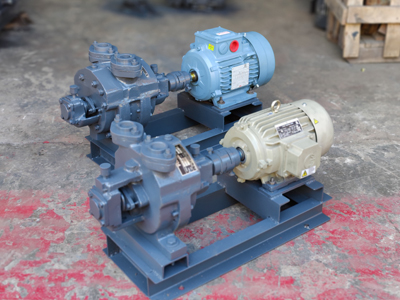Liquid Ring Vacuum Pump
 Make Enquiry
Make Enquiry
A Liquid Ring Vacuum Pump is a type of positive displacement pump that uses a liquid (usually water, but other liquids can be used) to form a seal and create a vacuum. It is widely used in various industries where low to medium vacuum levels are required. The basic principle is similar to the water ring vacuum pump but can be applied to a broader range of liquids beyond water.
How it works:
- Impeller and Casing: The liquid ring vacuum pump has an impeller mounted on a shaft that rotates within a cylindrical casing. The impeller is offset from the center of the casing, creating a gap around it.
- Liquid Seal: A liquid (typically water) is introduced into the pump casing, where it forms a ring-like seal around the impeller. The liquid forms a "ring" that moves with the impeller as it rotates, and this liquid ring helps isolate the various chambers of the pump.
- Gas Intake: As the impeller turns, the liquid ring's shape changes, and it traps gas from the inlet port in the spaces between the blades of the impeller.
- Compression and Discharge: The trapped gas is then compressed as the impeller continues to rotate. This compressed gas is pushed out through the exhaust port. This process creates the vacuum at the inlet side.
- Vacuum Generation: The continuous rotation of the impeller and the action of the liquid ring allow the pump to maintain a vacuum on the inlet side while simultaneously expelling the air and gases on the discharge side.
Key Features :
- Self-Priming: Like water ring pumps, liquid ring vacuum pumps are self-priming, meaning they can start without needing a separate priming system. The liquid ring helps prevent air from entering the pump.
- Energy Efficiency: They are generally more energy-efficient compared to other types of vacuum pumps, particularly for low- to medium-vacuum applications.
- Variety of Liquids: While water is commonly used, other liquids such as oil, glycol, or synthetic fluids can also be used, depending on the application. This flexibility allows for use in harsher environments or when water availability is a concern.
- Handling Wet or Dirty Gases: The liquid seal allows these pumps to handle wet gases, steam, or gases that might contain particulate matter or contaminants without causing significant wear or damage to the pump.
Advantages:
- Versatility: Liquid ring vacuum pumps can handle a variety of gases, including corrosive or wet gases.
- Durability: The liquid ring mechanism helps prevent friction between moving parts, reducing wear and extending the life of the pump.
- Reliable Operation: They are known for their reliable operation, especially in harsh or demanding environments.
Applications :
- Chemical Industry: For applications like distillation, vacuum drying, or solvent recovery.
- Pharmaceuticals: Used in freeze-drying, vacuum filtration, and other processes where vacuum is required.
- Food and Beverage: In packaging, degassing, and liquid handling processes.
- Power Generation: Often used in the condenser systems of power plants.
- Oil and Gas: For separating gases and liquids, particularly in gas processing plants.
